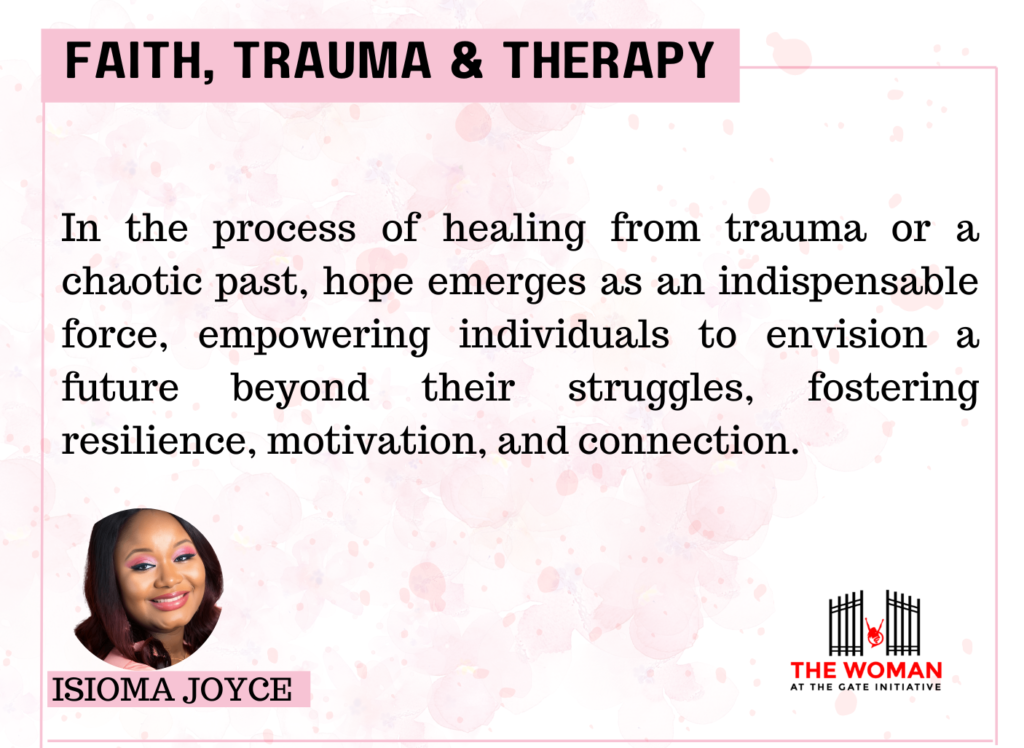
Hope, a powerful and resilient force, serves as a guiding light in the process of healing from trauma or a turbulent past. In the face of adversity, the ability to cultivate and sustain hope becomes an essential element in the journey toward recovery. This article explores the profound impact of hope on individuals navigating the complexities of trauma, shedding light on its transformative nature and its role in fostering resilience. Let’s take a look at the roles of hope in recovering from trauma:
𝟏. 𝐄𝐦𝐩𝐨𝐰𝐞𝐫𝐦𝐞𝐧𝐭 𝐓𝐡𝐫𝐨𝐮𝐠𝐡 𝐏𝐨𝐬𝐢𝐭𝐢𝐯𝐞 𝐎𝐮𝐭𝐥𝐨𝐨𝐤:
Hope empowers individuals by fostering a positive outlook on the future. In the aftermath of trauma, it serves as a beacon that propels survivors beyond the shadows of their past. The belief that things can improve and that a brighter future is possible becomes a catalyst for positive change.
𝟐. 𝐁𝐮𝐢𝐥𝐝𝐢𝐧𝐠 𝐑𝐞𝐬𝐢𝐥𝐢𝐞𝐧𝐜𝐞:
Hope acts as a cornerstone for resilience. It provides the strength to endure challenges and setbacks, fostering the resilience needed to overcome the lingering effects of trauma. A hopeful mindset enables individuals to bounce back from adversity, adapting and growing in the process.
𝟑. 𝐌𝐨𝐭𝐢𝐯𝐚𝐭𝐢𝐨𝐧 𝐟𝐨𝐫 𝐑𝐞𝐜𝐨𝐯𝐞𝐫𝐲:
Hope serves as a motivating force that propels individuals towards recovery. The belief in the possibility of healing creates a foundation for taking proactive steps, seeking therapy, and engaging in self-care practices. Hope fuels the determination to break free from the shackles of the past.
𝟓. 𝐅𝐨𝐬𝐭𝐞𝐫𝐢𝐧𝐠 𝐂𝐨𝐧𝐧𝐞𝐜𝐭𝐢𝐨𝐧 𝐚𝐧𝐝 𝐒𝐮𝐩𝐩𝐨𝐫𝐭:
Hope cultivates a sense of connection and support. Individuals sharing similar journeys find solace and strength in the collective hope of a supportive community. This shared hope becomes a source of encouragement, fostering empathy, understanding, and a shared commitment to healing.
𝟔. 𝐂𝐫𝐞𝐚𝐭𝐢𝐧𝐠 𝐚 𝐏𝐨𝐬𝐢𝐭𝐢𝐯𝐞 𝐍𝐚𝐫𝐫𝐚𝐭𝐢𝐯𝐞:
Hope enables individuals to rewrite their narratives. It encourages the creation of a positive and empowering story, allowing survivors to redefine their identities beyond the traumas they’ve experienced. This process of narrative reconstruction is vital for reclaiming agency and autonomy.
𝐂𝐨𝐧𝐜𝐥𝐮𝐬𝐢𝐨𝐧:
In the process of healing from trauma or a chaotic past, hope emerges as an indispensable force. It empowers individuals to envision a future beyond their struggles, fostering resilience, motivation, and connection. As we recognize the essentiality of hope, we acknowledge its transformative power in shaping narratives and guiding individuals toward a path of recovery and renewal. Hope, in its purest form, becomes the catalyst for a brighter, more resilient tomorrow.
